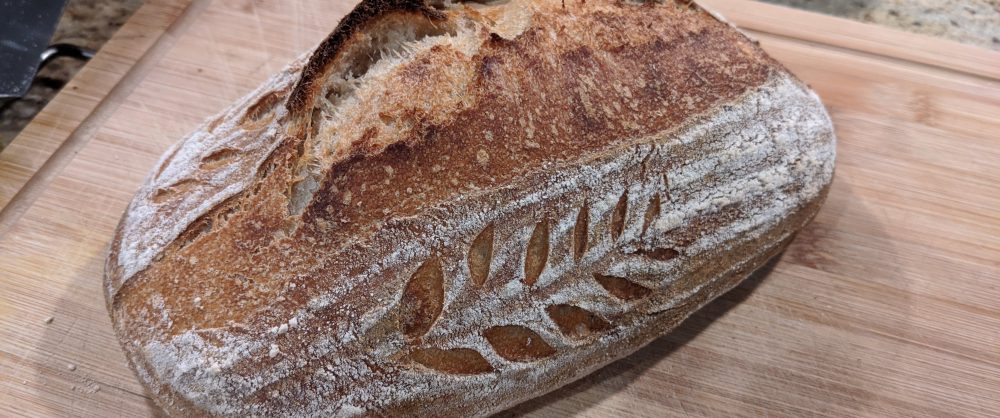While I’ve had some wonderful successes in my journey of artisan bread making, I’ve also had some massive fails. I want to be transparent because especially when I first started baking bread, though they tasted great, I wouldn’t exactly call them ideal. Luckily for me though, I haven’t produced any bricks or inedible loaves. But I have a certain aesthetic of what my bread should look and taste like. And to be completely honest, I’ve only reached that ideal a few times.
Most have come pretty close to my ideal, and I’ve been relatively happy with the results. But some, like the loaves shown in the pictures above, have come out looking like mutant spores from another planet! I baked them just yesterday (at the time of this writing) to try out my new Fibrament-D baking stone. From what I can tell, a few things went wrong.
First, based on the cross-sectional cut, it appears that my baking stone wasn’t hot enough. I can tell that because the bottom half of the loaf has a much tighter crumb than the top. This means that the ambient temperature was much higher than the stone and it made the loaves spring much more on top. The dark almost burned top also indicates that there was a huge differential in heat between the ambient air and the stone. So next time, I will spend more time heating the stone.
Second, I used convection baking as opposed to heating from the bottom. This circulates the air evenly through the oven. But I think if I used just normal baking, the heat would’ve radiated from underneath the stone (there’s about 1″ of clearance on either side of the stone). That probably would have helped control the ambient temperature and relied more on the stone as the main heat conductor.
Finally, based on how both loaves exploded, I think my loaves were under-proofed. The fact that they exploded in such an uneven way is a sure sign that the loaves were under-proofed and the yeast had way too much energy left. So I need to let them proof for a bit longer. But I have to admit that it’s still tough for me to tell when the loaves are fully proofed because with the wildly varying temperature of my kitchen, I have to constantly monitor the loaves.
In light of that, I recently purchased a mini-fridge at an auction that I’m using as a dough retarder. I’ve baked a few loaves thus far using a long, overnight ferment, and the results have been promising. Chilled dough is also MUCH easier to score!
Just this one fail has taught me so many new things and it is really helping me appreciate everything that goes into the whole artisan bread-making process!


